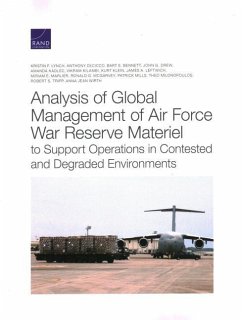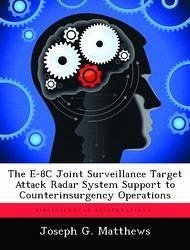
Impact of C4ISR/Digitization and Joint Force Ability to Conduct the Global War on Terror
Versandkostenfrei!
Versandfertig in über 4 Wochen
15,99 €
inkl. MwSt.

PAYBACK Punkte
8 °P sammeln!
The end of the Cold War marked the end of an era in United States national security. The bi-polar global balance of power, which defined our nation's defensive strategy for more than 30 years, was replaced with the uncertainty of failed nation-states, rogue authoritarian regimes, and international terrorist organizations. A new world was emerging with the rapid increase in computer technology, the internet, satellite communications, and global economic markets. In 1991, the United States conducted its first major conventional war using smart bombs, Global Positioning Systems (GPS), satellite c...
The end of the Cold War marked the end of an era in United States national security. The bi-polar global balance of power, which defined our nation's defensive strategy for more than 30 years, was replaced with the uncertainty of failed nation-states, rogue authoritarian regimes, and international terrorist organizations. A new world was emerging with the rapid increase in computer technology, the internet, satellite communications, and global economic markets. In 1991, the United States conducted its first major conventional war using smart bombs, Global Positioning Systems (GPS), satellite communications, and space-based imagery technology. These systems were further refined during operations in Bosnia, Kosovo, Haiti, and Somalia. Joint Forces were being deployed to all parts of the globe in ways that had not been anticipated before, and the concept of employing a large conventional force was largely becoming too cumbersome and obsolete. A lighter and more rapidly deployable force that provided the same lethal capabilities was required to meet the new challenges of the twenty first century. The Chief of Staff of the Army, General Eric Shinseki, provided a vision of force transformation in order to meet the new challenges for the future. One of the main concepts that emerged as an essential component of force transformation was the ability to achieve information dominance through network-centric warfare. The new paradigm of being a Joint Expeditionary Force that is more rapidly deployable, adaptive, lethal, and able to bring all Joint Force capabilities to bear in any given operation requires the technology that will provide commanders the ability to see the enemy first, understand the situation, and take decisive action. Whether it was low-intensity combat, humanitarian relief, counter-insurgency/counter-terrorist operations, or major combat operations, adapting to new policy demands set the stage for the deployments to Afghanistan and Iraq following the attack o This work has been selected by scholars as being culturally important, and is part of the knowledge base of civilization as we know it. This work was reproduced from the original artifact, and remains as true to the original work as possible. Therefore, you will see the original copyright references, library stamps (as most of these works have been housed in our most important libraries around the world), and other notations in the work. This work is in the public domain in the United States of America, and possibly other nations. Within the United States, you may freely copy and distribute this work, as no entity (individual or corporate) has a copyright on the body of the work. As a reproduction of a historical artifact, this work may contain missing or blurred pages, poor pictures, errant marks, etc. Scholars believe, and we concur, that this work is important enough to be preserved, reproduced, and made generally available to the public. We appreciate your support of the preservation process, and thank you for being an important part of keeping this knowledge alive and relevant.












